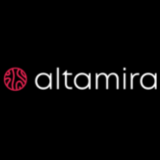Over the course of our many years of experience, we have been able to set up such standards and principles of workflow that are guaranteed to bring results in projects and satisfaction to our customers. Regardless of the scale of…
Virtualization software products
Virtualization software
We're an industry leader in virtualization software, helping organizations innovate and succeed by streamlining their IT processes. By virtualizing the…
Hypervisors and panels
A hypervisor is a program or device that creates and runs virtual machines. The hypervisor makes it possible to run…
Servers for the virtual workplace
A server for a virtual workplace is a service that allows you to work with office programs and accounting and…
Other services and products
Company management
James Mills
Cheryl Hawkins
John Barefoot
Customer reviews
Eric Prince
We used the company's software to virtualize our infrastructure and were pleasantly surprised by its ease of use. We were able to set up the entire system quickly and start using it without any problems.
Joey Harding
I have worked with this company for several years and I can confirm that their virtualization software is one of the best on the market. They have a great team of developers who are always willing to help.
Janet Everts
I have used the company's software to virtualize our infrastructure and have been very pleased with its performance and reliability. Thank you for a great product!
Useful articles
Is React a Good Fit for Your Project?
In the digital era, users have high expectations when it comes to website performance. They…
Key Guidelines for Selecting the Best WordPress Hosting for Your Website in 2023
Navigating the broad array of hosting options available today can be overwhelming. This article aims…
How to Set Up Connection to MySQL with Delphi
Delphi, a powerful programming language and IDE, is renowned for its ability to create robust…
Trusted By

Our Workday HCM training programme is meant to give students in-depth instruction that promotes a practical grasp of important concepts.

Forbytes, an engineering software company, is a top provider of bespoke tech solutions for businesses across the globe. We are passionate about what we do and ready to share our extensive experience.

S-PRO is a leading mobile application development company that excels in creating innovative and user-friendly mobile apps

Netrocket offers Shopify SEO services that are designed to optimize online stores.

Enhance your email campaign with an outstanding email development by GetDevDone. You’ll get a perfect responsive email template no matter how complex your design is.

Magento development services address all of an online business's technological needs. To assure the quality of our service, we rely on our PHP coding expertise and certified Magento understanding at BelVG.

We are a leading white label PPC agency, offering comprehensive and customizable pay-per-click advertising solutions for businesses. With our expert team and advanced strategies, we provide seamless white label PPC services that empower our clients to enhance their online presence, drive targeted traffic, and achieve their digital marketing goals.

Embrace the power of design at The Designest. Unleash your creativity with captivating visuals, inspiring resources, and striking metal fonts for bold and impactful designs.

Delphi Database Components enables app development on multiple platforms & 32/64-bit systems, offering direct access to databases like Oracle, SQL Server or MySQL, plus a mature ORM for Delphi.

Maximize efficiency and productivity with Altamira's software development services. Partner with us to build innovative solutions for your business.